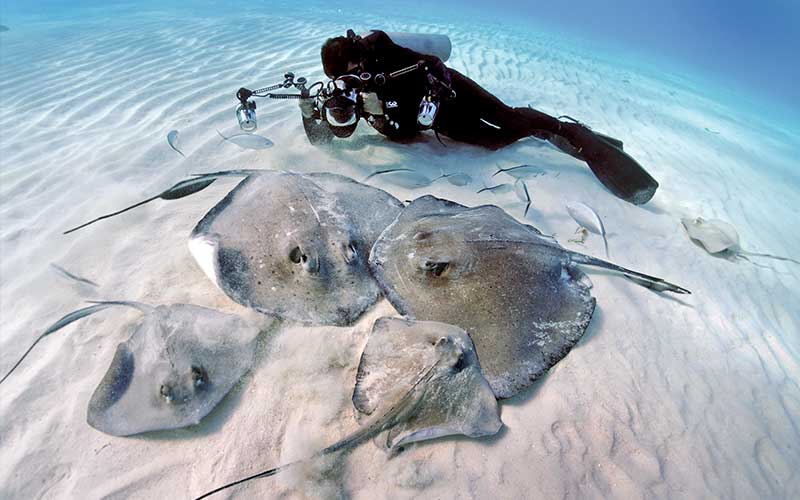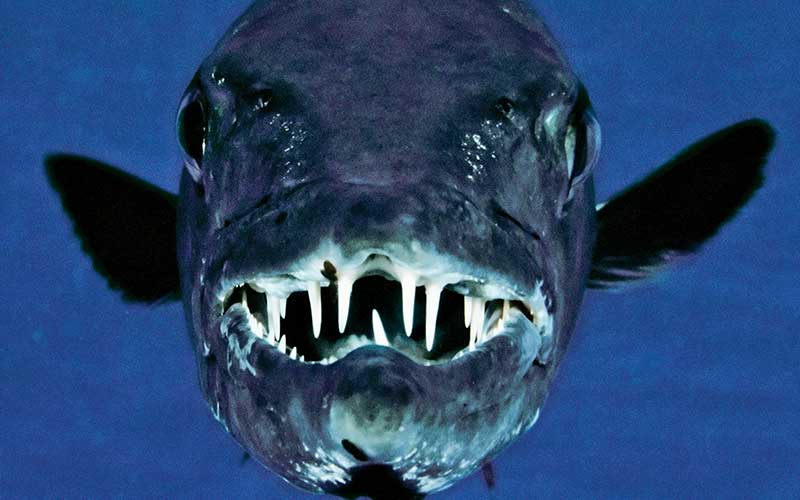It’s official. I am addicted to the Cayman Islands.
Yes, I know there are many still-to-be-discovered corners in the sea. I go to those places often, but always I seem to make my way back to Cayman. The pattern began when I first visited the islands in 1980 following the advice of Harry Wadsworth, a friend and colleague who said, “The diving is terrific, and the mosquitoes are not bad.”
Well, Harry was right, about the diving anyway. There was always a lee shore no matter what the weather, and the diving was fabulous. I returned on assignment for National Geographic in 1981 with renowned author Peter Benchley. Over the decades, more trips followed, as time and time again, I found myself in the Cayman Islands for commercial advertising work. But I always wanted something more. I wanted to pull back the layers, to see it all.

National Geographic deepwater expert Emory Kristof and I collaborated on a shallow-to-deep portrait of Grand Cayman. I photographed everything between 1 and 200 feet of water, and Emory took over from there with submarines. During the shoot, Jay Ireland showed me a handful of the original pioneer stingrays feeding on fish scraps in North Sound. The gentle gathering of rays opened a visual Pandora’s box that would become my third Cayman story and completely seal my obsession with the islands.
The cause of my obsession is not singular but an intoxicating combination: the conch chowder; Cathy Church’s photo shop; the sheer blue drop-off of Bloody Bay Wall on Little Cayman; the sunlight dancing across the sands of North Sound; Devil’s Grotto cave system filled with clouds of silversides that glitter like tinsel; and the tranquility of the Brac. And of course there is the famous Cayman Island welcome. The people of the Cayman Islands truly like and welcome divers and underwater photographers. I have had many Caymanian customs officers check my gear and say, “Have a nice dive!” That’s a nice change from the scowl and growl that can greet our gear-laden arrival in other locations.
The Caymans have many charms, but its most seductive feature by far is elemental: water. It is the main reason I return year after year; it is always about the water.

I have a habitual need to get as high as possible above an island to comprehend why it has wonderful reefs, great diving or incredible water. My partner, Jennifer Hayes, and I continually pore over Google Earth and a well-worn National Geographic Atlas to really “see” a place in relation to the rest of the watery world. The Cayman Islands sit in the center of the western Caribbean. Cuba forms an umbrella nearly 1,000 miles long, shielding the Caribbean and the Caymans from the colder Atlantic. To the south, the Cayman Islands are perched at the very edge of the 25,000-foot-deep Cayman Trench. This very deep, very clear water creates a photographic oasis with a color all its own. In the days of film photography you could pick up a Fujichrome Velvia slide and instantly recognize the color of “Cayman blue,” a rich, unique and royal shade.
This remarkably clear water surrounds the islands, pouring into the sounds and through the reefs, creating crystal studios like North Sound. The extraordinary visibility on the walls of the East End can cause mild vertigo or just plain make you happy. Jump off a dive boat over the MV Capt. Keith Tibbetts (a 330-foot Russian frigate acquired from Cuba and sunk as an artificial reef); when the bubbles clear, most of the ship will be visible beneath your fins. A dive on Bloody Bay Wall off Little Cayman is like falling off an undersea cliff painted by Jackson Pollock.

For me, underwater photography begins and ends with water and light. There is no better place in the world than the sandbar in North Sound to experience and photographically explore these two elements. The sound is a perfect meeting of sky and water to create a shallow natural light studio. Southern stingrays can glide into my frame filled with clouds and sky. Small waves rake the sand with a Zen-like precision. The horizon is endless. I like to arrive early, just after dawn, to watch squadrons of rays materialize from the deeper water; I stay until dusk. During the day these gentle creatures interact with screaming and delighted humans until the last tour boat leaves. Then the stingrays settle down and do stingray things like snuffle and sleep.
The Caymans have always been a place where I can experiment with new ideas in photography, and it is a place that I can get to easily. I can leave my snowy St. Lawrence River studio and be on a reef in time for the incredible blue light at dusk. I have watched through the years as the islands have changed, grown, fallen to hurricanes and emerged even stronger. Through it all, there has always been an incredible sense of underwater community, one that has embraced generations of photographers and artists.
I began my career shooting black and white in the Caribbean. Through all the sweeping changes in photography from film to digital, my first love is still black-and-white film. The incredible palette of Cayman’s clear water, clean sand and brilliant sunlight translates perfectly to black and white. Over the years, I have found the images I make in the Cayman Islands are central to how I look at the ocean. There is no place in the world where I can be closer to the essence of water.

© Alert Diver — Q2 Spring 2010